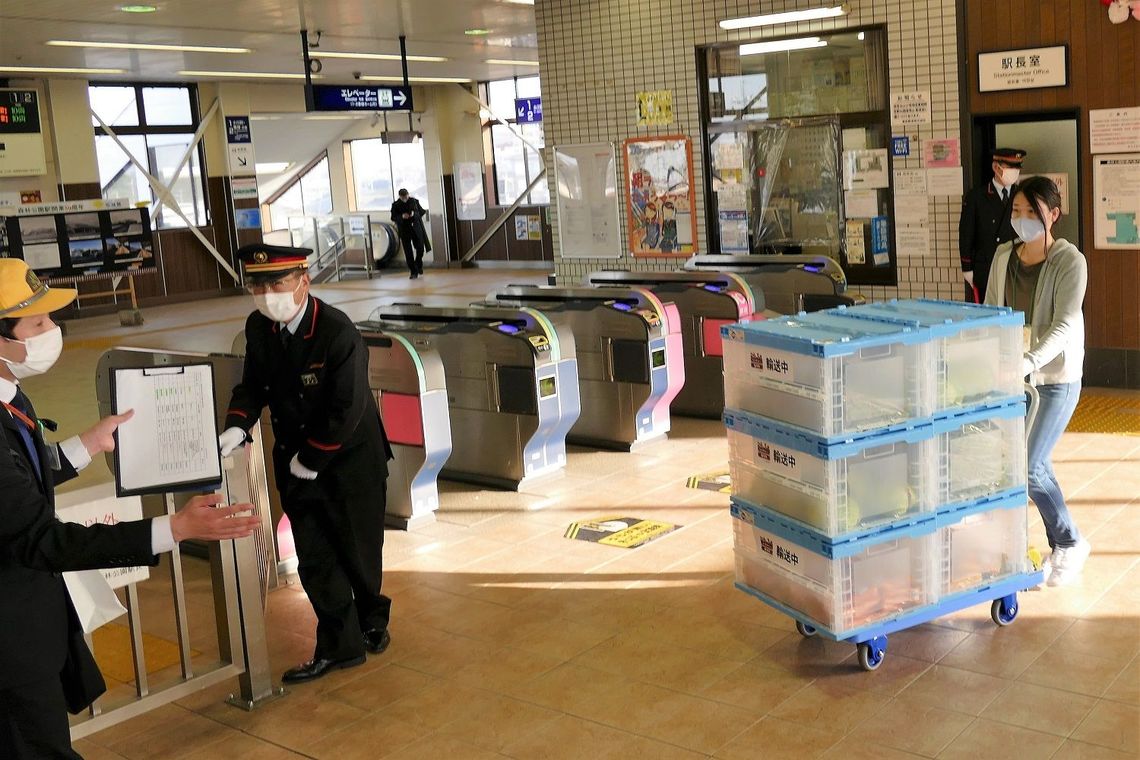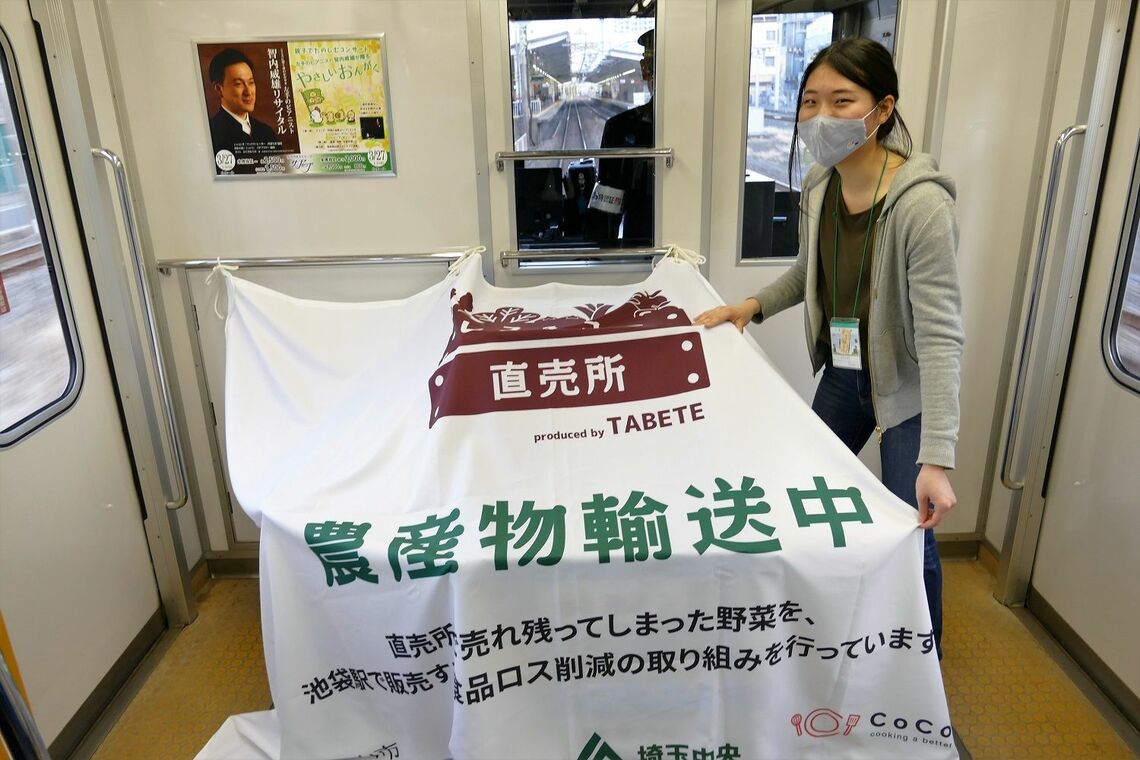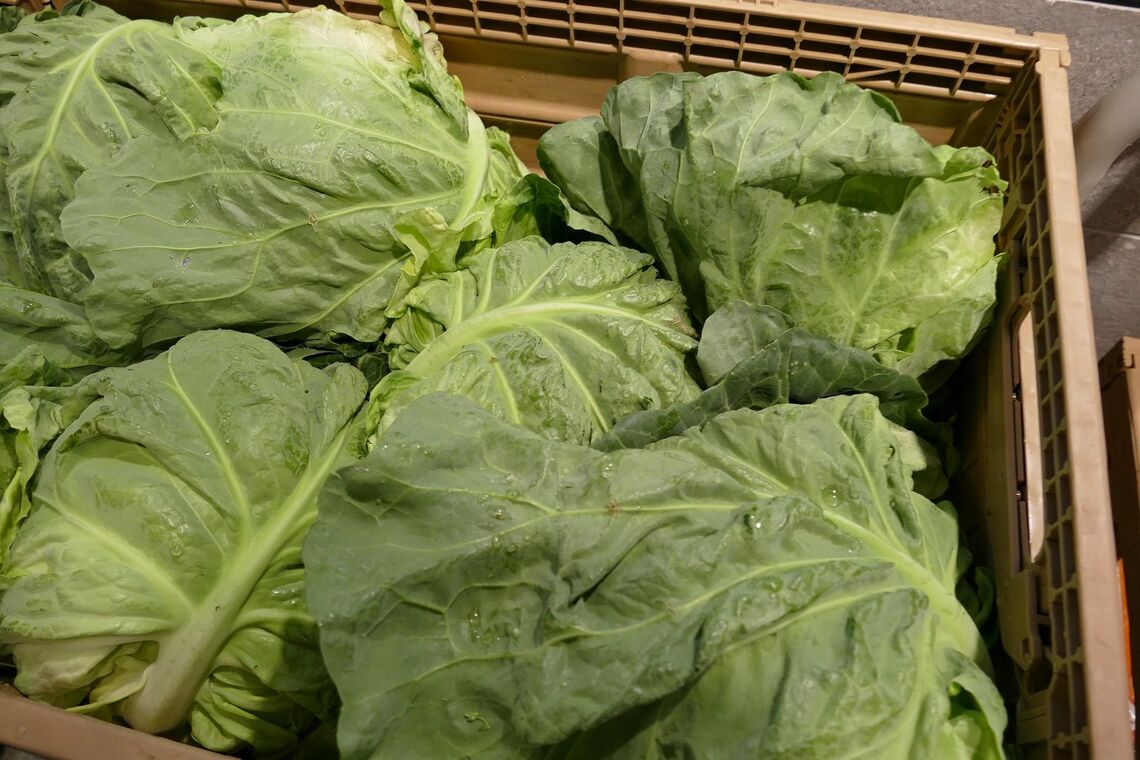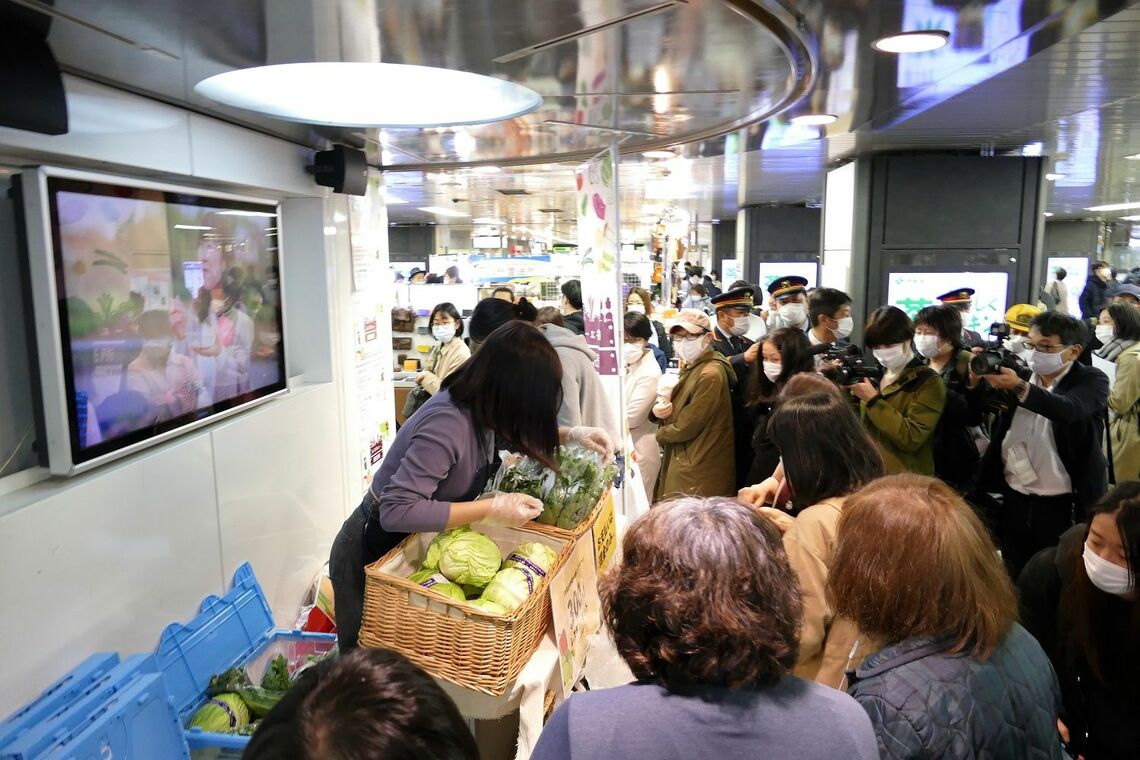
In Tokyo, Tobu Railways (on the Tojo Line, serving a million passengers daily) are running a 2nd trial where they pick-up unsold fresh vegetables from a rural wholesale center and bring it to central Tokyo's Ikebukuro station for direct sale to consumers. #TrainTwitter 







Vegetables picked from the field at 06:00 arrive at Ikebukuro sta. by 17:49, the stall opens at 18:00 and 18:30 everything has sold out. Prices are slightly lower than usual, and being able to shop right at the ticket gate saves consumers a trip to the super-market. #TrainTwitter 







At the same time, Keikyu's Kurihama Line is running a trial to use off-peak time train space to transport fresh vegetables direct from farmers to consumers in Yokohama. Leaving Misakiguchi Station (which is the center of the farm rich Miura Peninsula) at 10:26, for Kamiooka Sta. 







The produce arrives ca. 11:00 and is sold out by 11:40. The important thing here is that instead of a 120 minute roundtrip from farm to the Kamiooka Station in a residential area of Yokohama, farmers now only need to truck it 15 minutes. The train handles the rest. #TrainTwitter 







For farmers this means less work, more sales. For railway companies this means more revenue. For consumers this means fresher vegetables, direct to the station they commute to everyday, saving them super-market trips, at lower prices. #TrainTwitter #AgricultureTwitter 



In Kyoto right now small producers, breweries, craftsmen and farmers who live by the end of local railways are now cooperating with railway companies to ship their produce daily to central Kyoto. The railways have the capacity and the customers already: all they need is goods. 

The Shinkansen high speed bullet trains are also increasingly used for long distance high speed transport, but here the goods are high premium such as fresh fish or produce from far northern farms and ports to speciality buyers in Tokyo. Freight capacity is limited and expensive. 







Buses too do cargo now. The national highway bus system is the perfect way to bring fresh fruits and other produce from distant rural areas to urban centers: the buses have plenty of space and otherwise unsellable food items can easily be sold at a high profit in the big cities. 





In rural areas delivery companies lacked drivers and bus companies lacked passengers. By combining the two large savings has become possible while keeping service levels up, and even very small scale rural farmers can now reach valuable urban markets. 



• • •
Missing some Tweet in this thread? You can try to
force a refresh






















